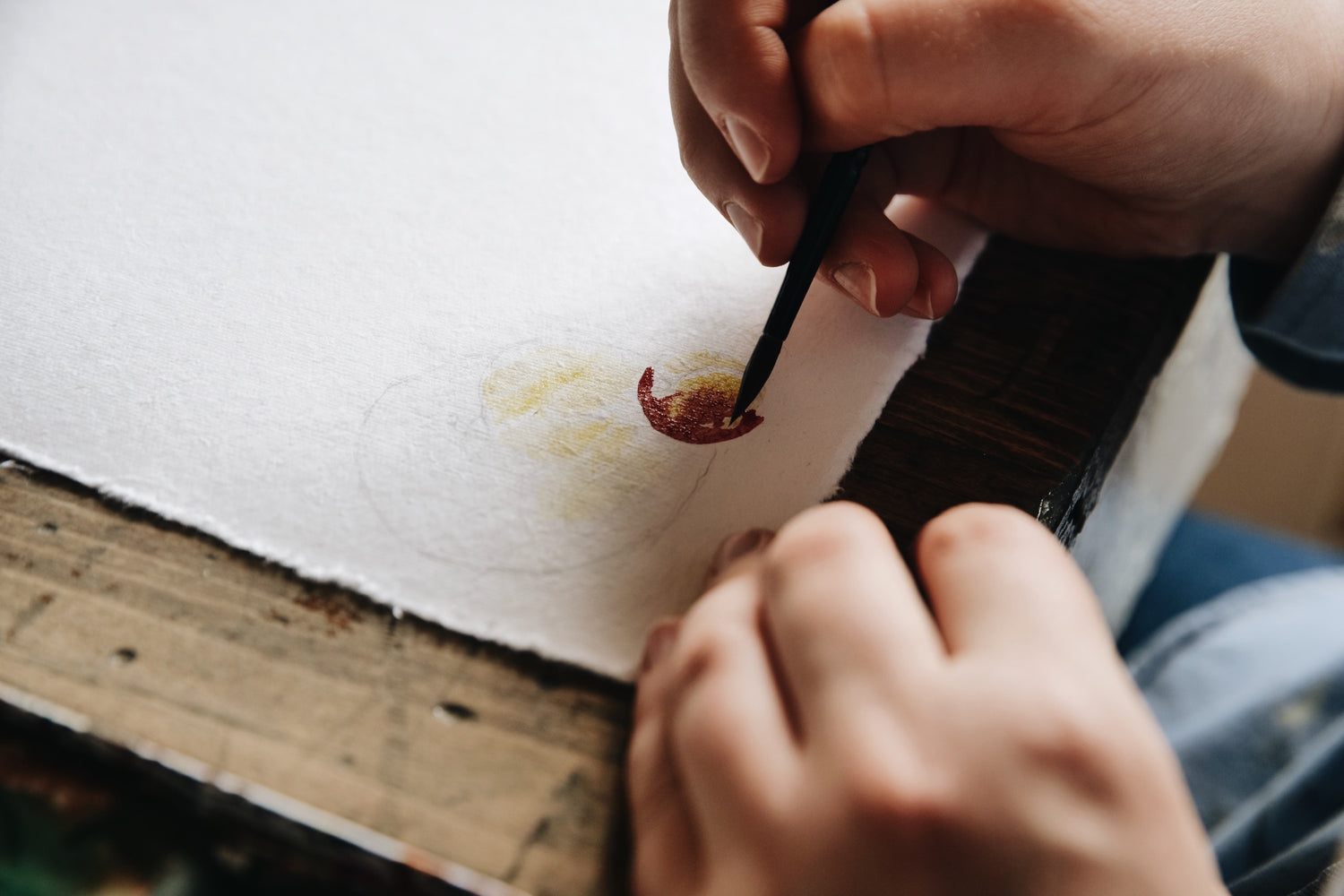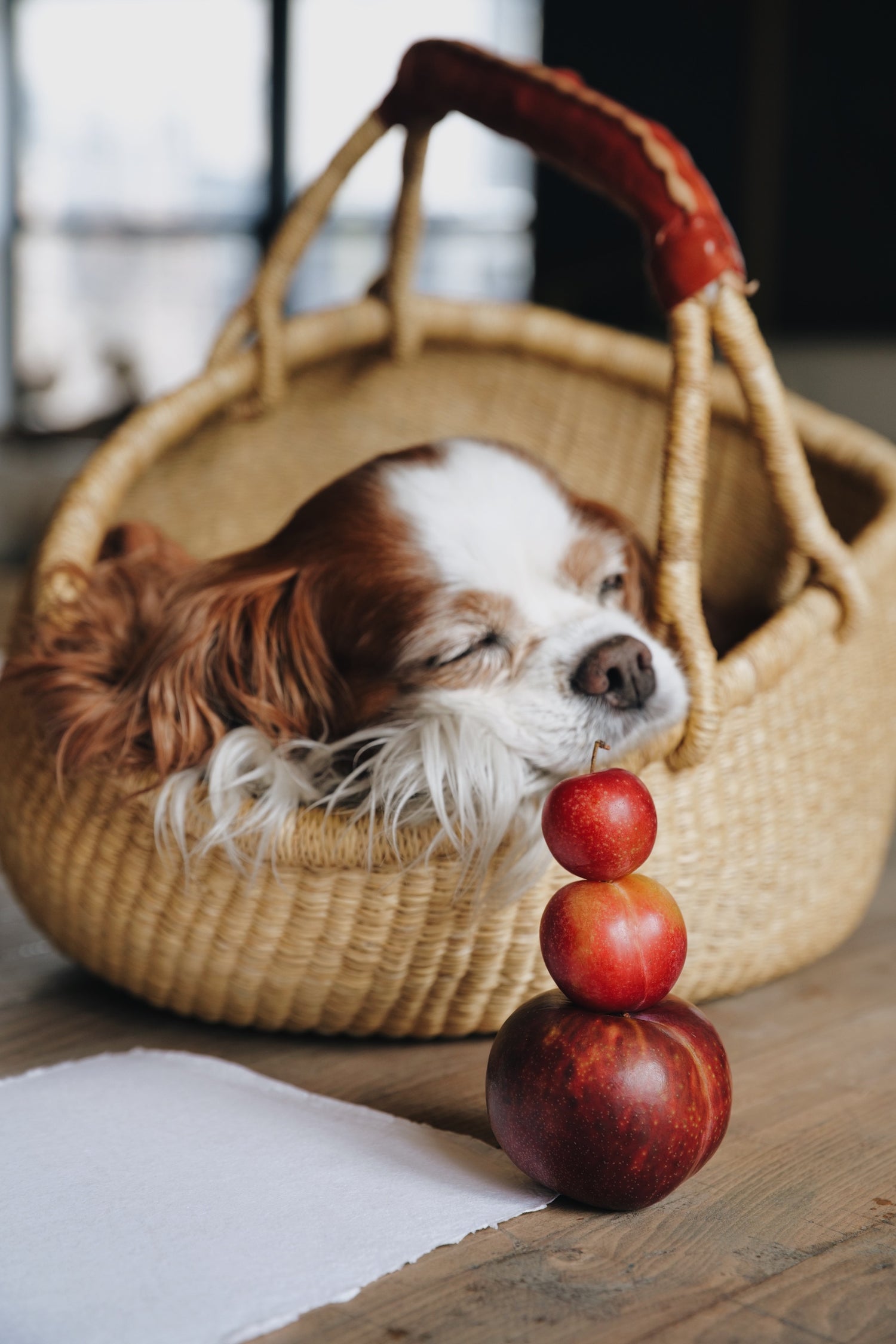"When the old plum tree blooms, the entire world blooms."
- Dogen
It's stone fruit season in the Midwest, and we're very inspired by some local plums we picked up at the market.
The different varieties and colors make them the perfect watercolor subject. Perfectly round or slightly oblong, the shapes highlight the beauty of nature.
From vibrant reds to mellow golden hues to deep purples, this color palette inspired our latest Ask Martha painting tutorial.
Below you will find a video and written tutorial on how to paint your own plum! These tips and tools can be used to paint other fruits of your choosing, as well.
Gather your supplies
For this portrait, we used:
- Beam paintstones - Fall Poplar
- Horadam Watercolor Set
- Handmade watercolor paper
- Escoda Reserva Brush Set
- Studio Tools: The Petite Palette
- Studio Tools: The Wide Tool Holder
- Pencil
Step 1: Sketch your plum with a pencil
There are many varieties of plums to choose from. Determine which type you want to paint (and eat)! Inspect their colors and sizes.
Once you choose your subject, place it in the light and explore the shadows. Position yourself in a place where the light highlights and enhances the details and shape of the plum.
Start by doing a light sketch of the fruit. This only should be the outline, no need for the tiny details here. Keep the movement flowing and your pencil light so it's easy to paint over. Feel confident in erasing, altering, and starting over. Let your pencil feel as if it is gliding over the shape of the fruit on your page.
Step 2: Mix your colors
Wet your watercolor brush and begin mixing your colors. Take a look at your subject, and choose a selection of paints that highlight the light, medium, and dark hues of the fruit.
Mix your first color on your paint palette. Start with the lightest first. As you move to the next color, you can keep some of that first color on your brush. By mixing a little bit of each previous color into your next, you will create a harmonious color palette that translates beautifully on paper.
Step 3: Begin painting
Now that you have your colors, you can begin painting! Utilize the white paper to act as your highlights. Start with your lighter colors and create pockets of pigement. As you move to your next color, paint around your lighter color. Use clean water and a clean brush to blend.
Look at where the light is hitting the subject, and begin bringing in darker colors to create depth. Still allow the lighter color to shine through in places.

Details, details
As you're painting, use a variety of different brush sizes to differentiate details. Larger flexible brushes to lay down bigger areas of color. Thinner brushes for fine lines. The amount of pressure you use can impact the weight of your line.
Create texture by layering on more pigment once your painting has dried or dab a dry paper towel onto the paper to lift up some pigment while your painting is still damp.
Step 4: Add final touches
After layering the colors of your fruit body, wait a few minutes for the pigments to dry. Once your fruit colors have dried, go in with a fine tip brush to add the stem and fine details.
Now you've painted your very own plum! This watercolor technique can apply to any fruit you'd like to paint. If you want to share your artwork with us, we'd love to see it! Send us an email at info@marthame.info.
If you'd like to join us for an in-person watercolor workshop, find tickets here for our August 25th Fruit Study Workshop at the Martha Mae Studio. This will be an intimate morning watercolor class accompanied by coffee, tea, and pastries. Come meet other Chicago watercolor enthusiasts and spend the morning learning and creating together.
Paint a Plum
-
Paintstones
Regular price From $11.00 USDRegular priceUnit price per

The Spirit of the Plum
The spirit of the plum speaks to the value of patience and the importance of remaining calm during challenging times.
Dating back thousands of years, the plum tree holds a unique place in the annals of horticulture and symbolism. In many cultures, the plum tree's spiritual significance extends to divination and protection. It is considered a guardian of sacred spaces, and its presence is believed to ward off malevolent forces.
The Japanese admired the plum tree's ability to bloom in the harsh conditions of late winter, seeing it as a metaphor for resilience and strength in the face of adversity. This resilience was reflected in the ancient practice of cultivating unique plum tree varieties, known as "ume," which still thrive in Japan today.
In Celtic mythology, the plum tree is intrinsically linked to the goddess Brigid (or Bridget), a significant figure representing the elements of fire and water. Brigid is associated with healing, creativity, and the sacred fires of the hearth. She is often depicted holding a branch of the plum tree, which symbolizes protection and good fortune.






